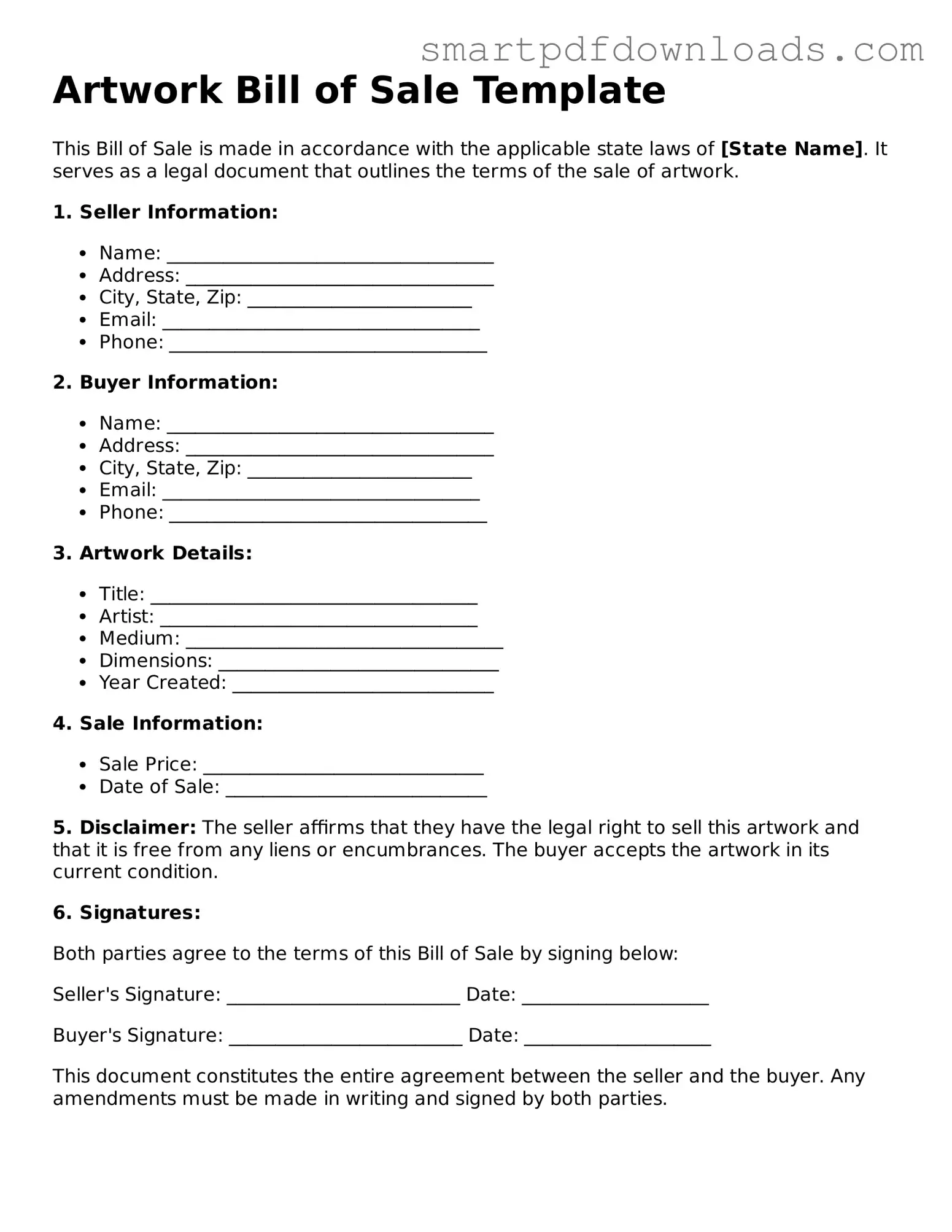Artwork Bill of Sale Template
This Bill of Sale is made in accordance with the applicable state laws of [State Name]. It serves as a legal document that outlines the terms of the sale of artwork.
1. Seller Information:
- Name: ___________________________________
- Address: _________________________________
- City, State, Zip: ________________________
- Email: __________________________________
- Phone: __________________________________
2. Buyer Information:
- Name: ___________________________________
- Address: _________________________________
- City, State, Zip: ________________________
- Email: __________________________________
- Phone: __________________________________
3. Artwork Details:
- Title: ___________________________________
- Artist: __________________________________
- Medium: __________________________________
- Dimensions: ______________________________
- Year Created: ____________________________
4. Sale Information:
- Sale Price: ______________________________
- Date of Sale: ____________________________
5. Disclaimer: The seller affirms that they have the legal right to sell this artwork and that it is free from any liens or encumbrances. The buyer accepts the artwork in its current condition.
6. Signatures:
Both parties agree to the terms of this Bill of Sale by signing below:
Seller's Signature: _________________________ Date: ____________________
Buyer's Signature: _________________________ Date: ____________________
This document constitutes the entire agreement between the seller and the buyer. Any amendments must be made in writing and signed by both parties.
